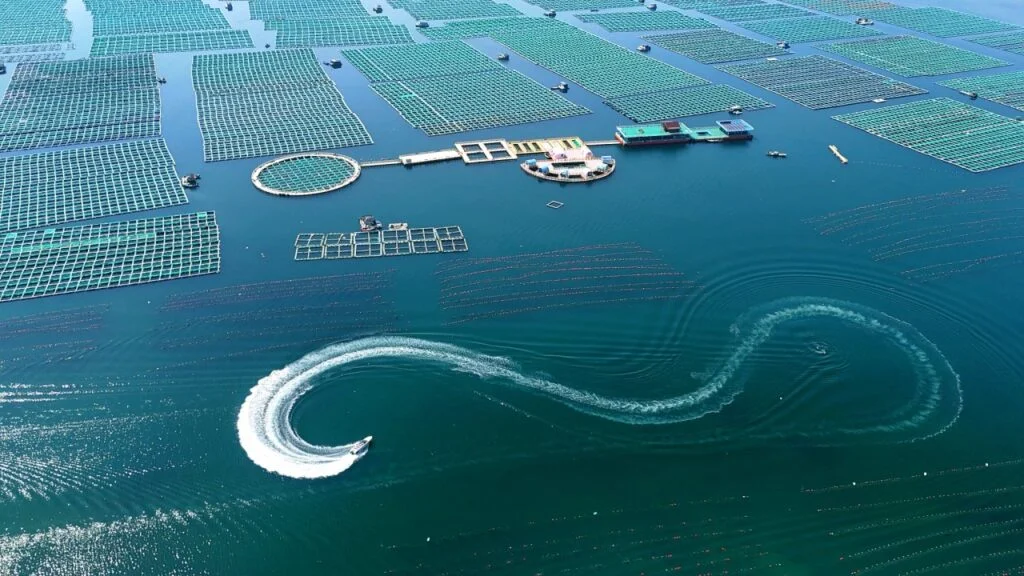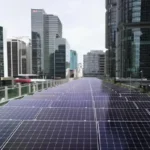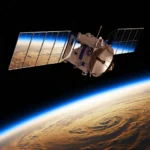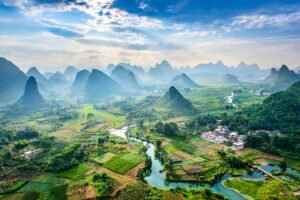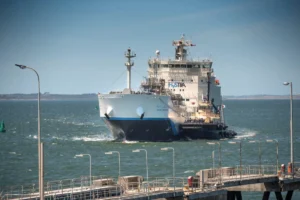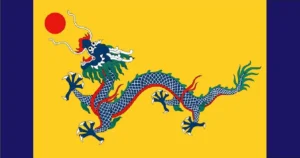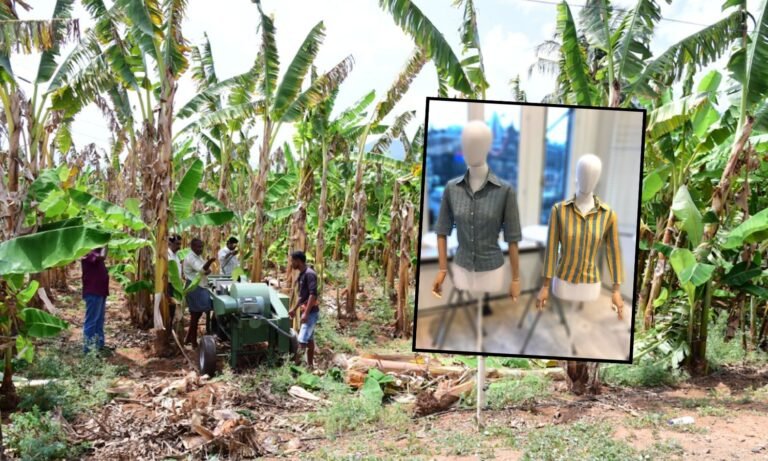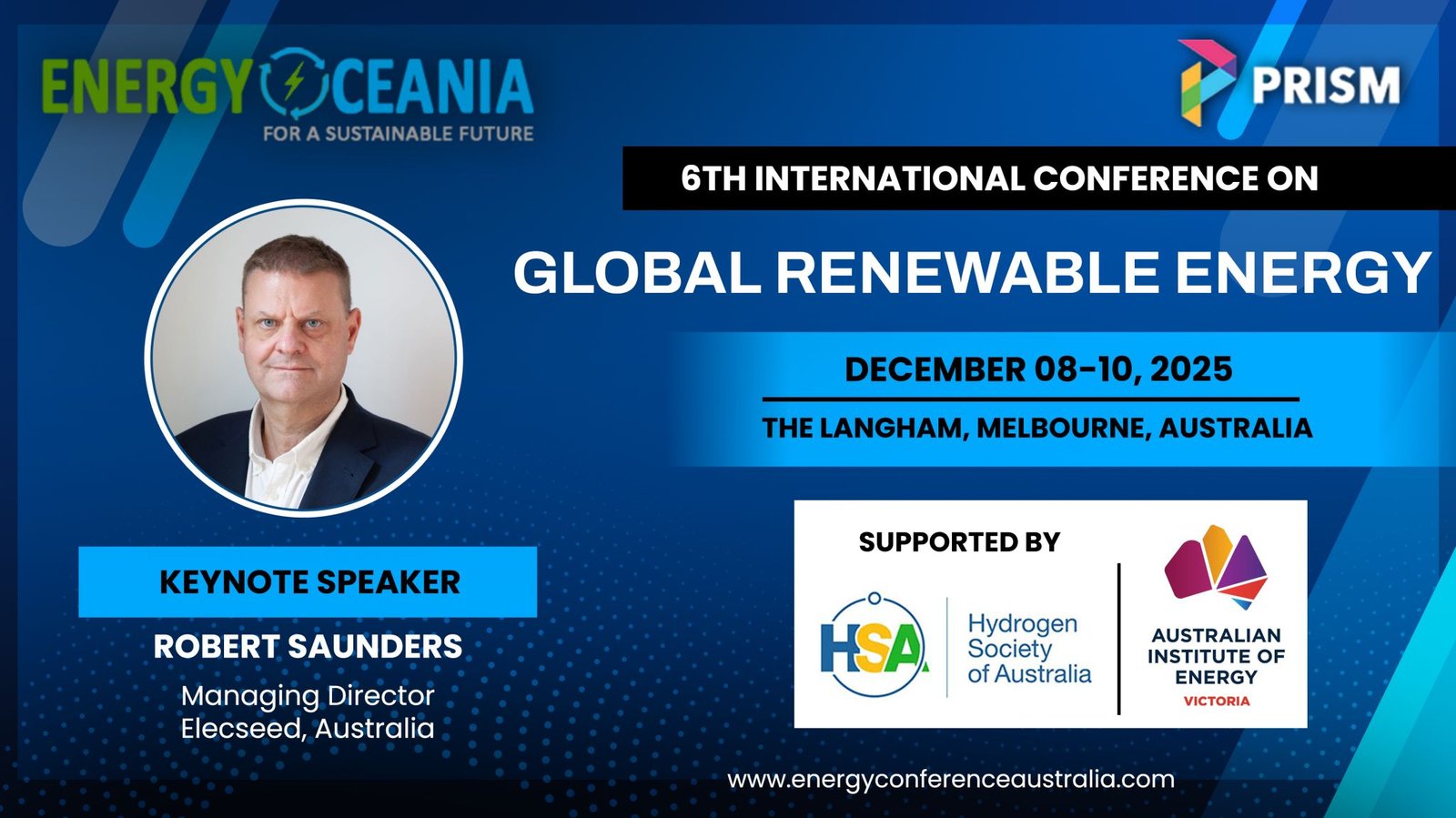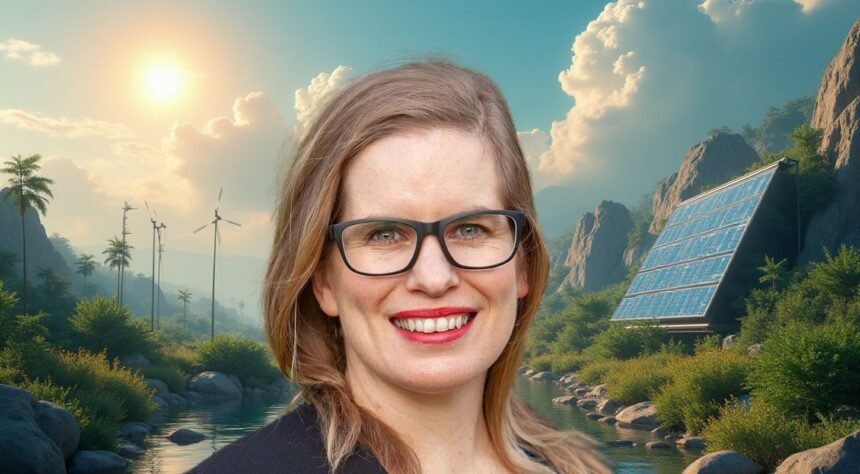Contributor: Anthony Coles
IMAGE: Shidao Weihai Sanggou Blue Economy Development Zone
The United Nations has been pushing the concept of “blue carbon” since 2009 and China has responded by issuing a number of policy ‘opinions’ to align with these ambitions:
- a mechanism for realising the value of ocean-based ecological products
- the accounting method for marine carbon sinks
- the Blue Carbon Technical Regulations, and
- the Belt and Road Initiative for Blue Cooperation
With the advancement of national 30:60 Goals “carbon peaking and carbon neutrality”, the blue carbon economy is seen as a new engine for economic transformation.
And if outcomes from China’s previous green tech economic transition commitments are anything to reference (ie: RE, PV, EV, Battery, H2), Western markets will need to keep an eye on these developments and look for ways to contribute to keep up.
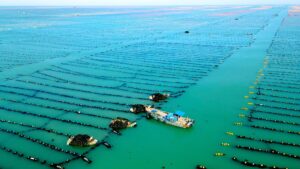
Weihai’s Aquaculture Kelp Farms
In recent years the China’s eastern-most city located in Shandong Province, Weihai, has attached great importance to building its strengths in the “blue economy”. Even giving Shenzhen a run for its money.
The Blue Economy is about more than just fishing.
As one of China’s leading seafood production areas and home to the only duty-free international seafood processing zone, Weihai is leveraging its advantages in marine ecology resources and established an ocean carbon sink research platform and exchange centre with international influence.
In the Nanhai New Area more than 20 varieties such as suaeda salsa, tamarisk, quinoa, bermuda grass and evening primrose thrive on the land with a salt content of as high as 15 ‰. Ten years ago, there was no grass growing here.
Since 2014 the Weihai Academy of Blue Economy and Peking Universities Weihai Academy of Ocean Ecology and Economics have carried out demonstration zones of carbon sink cultivation for shallow sea shellfish and algae. Blue carbon-derived products such as soft drinks and edible seed oils have been developed and put into the market and an industrial chain triggered by blue carbon has emerged from scratch.
Weihai has 16 State-level marine pasture demonstration areas and 33 Provincial-level marine pasture projects.
From 2015 to 2020 the annual carbon dioxide emission of non-baited shellfish and algae cultured on the pasture has been reduced by 480 thousand tons, accounting for one third of the province’s total carbon dioxide emission reduction.
Shandong’s Blue Carbon Economic Development Action Plan proposes that by the end of 2025 the blue economy will account for more than 30% of the marine economy of Weihai.
In recent years Weihai has been vigorously developing its shellfish and algae farming focusing on kelp and oysters, and continuously enhancing the carbon sink capacity of marine fisheries becoming an important fishery carbon sink in China.
In 2023 the output of shellfish and algae was around 2 million tons, equivalent to 150 thousand tons of carbon storage.
China is also the first country to include seagrass bed restoration in coastal zone remediation projects.
Weihai has implemented the first “government + industry + enterprise” public welfare restoration model of seagrass bed in China, attracting more than 100 million yuan. The area of seagrass bed in the city reaches 470 Ha, and the carbon storage is 64,800 tons.
Five halophyte germplasm breeding production, learning and research bases were built with 16 high-efficiency carbon sequestration varieties, including Suaeda salsa and Tamarix chinensis were screened.
The coastal wetland habitat restoration was accelerated through breeding and promotion now covering more than 8,200 acres and storing more than 7,000 tons of carbon.
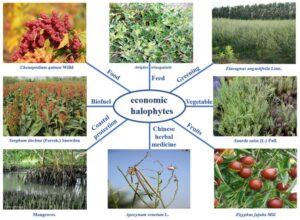
Weihai’s Blue Economy
Blue carbon is the oceans carbon sink. Mangroves, seagrass beds and salt marshes are the three major coastal blue carbon ecosystems that can capture and store large amounts of carbon and have extremely high carbon fixation efficiency. Rongcheng has a coastline that accounts for one-sixth of Shandong Province, more than 34,000 Ha of aquaculture sea area, more than 300 marine economic biological species and 10 national-level marine parks.
Technical research on “blue carbon” has helped develop a whole new industry chain. The Tang Qisheng Institute of Marine Grassbed Ecosystem Carbon Sink Observatory and the Jiao Nizhi Institute of Marine Ecological Economy have played leading roles in gathering data, developing carbon sink methodologies and advancing new technologies in carbon sink measurement and habitat restoration.
In cooperation with the scientific research team of Tsinghua University Weihai has compiled of the first “blue carbon” methodology in China for kelp carbon sink, and applied for the first domestic blue carbon industry group standard.
Are any Australian Universities participating in this research?
China’s Blue Economy Carbon Market Ambitions
Addressing climate change and promoting low-carbon development has global consensus. To achieve China’s “Dual Carbon” goals requires more than marine ecosystems to sequester carbon and increase sinks. The use of market mechanisms to control and manage greenhouse gas emissions has become a more powerful means of reducing emissions.
When “carbon” becomes a tradable asset, it will undoubtedly provide more possibilities for achieving carbon neutrality and promoting economic transformation.
Looking at Rongcheng’s 6,700 Ha of productive seafood aquaculture area from the surface can be deceiving. Only by giving the sea a three-dimensional perspective can we see what lies beneath the surface. In the upper cultivation area is the development of kelp farming, nesting within this is Gracilaria lemaneiformis and other edible algae. The middle cultivation area includes shellfish while underneath is an artificial reef for the cultivation of fish, sea cucumbers and other species.
Using this model the yield for the area is nearly 30% higher than the traditional model, but also adds value through its “blue carbon sink”.
Algae, phytoplankton absorb carbon dioxide in the air, shellfish and algae for food, the carbon molecules in the form of biological deposition to the seabed, these sediments have become sea cucumber food. In this way, carbon dioxide in the air sinks to the bottom of the sea, forming an ocean carbon sink, and realising the circular economy.
If only Australia could embrace a more strategic industry-government-academia engagement with China to collaborate on these items. My visit in 2017 below…
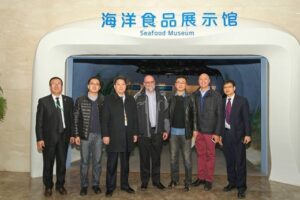
Image source Anthony Coles. – Weihai Rongcheng Seafood Industry Museum – hosting CleanSeas Ltd Jan 2017
Green ‘Carbon’ Finance
In 2021 Weihai issued 20 million yuan of “ocean carbon sink loans” which came with 425,000 tons of carbon emission rights .realising the economic value of “blue carbon”.
In 2022 China Life Property Insurance and Rongcheng Broussou Island Aquatic Co., Ltd signed a “seagrass carbon sink insurance contract”, China’s first commercial seagrass bed carbon sink index insurance. The risk bases its compensation on the surplus value of the seagrass bed carbon sink, including the economic value of carbon sequestration and the cost of remediation, and assumes liability for the event of a seagrass beds carbon sink weakening due to specific marine environmental changes, fully protecting the ecological and economic value of seagrass bed carbon sequestrations. Soon after, oyster farming carbon sink index insurance contract was signed, and away goes green finance sector.
All of this not being reported or acknowledged by international media or government policy strategist if they still exist outside of media value).
According to Cong Yongping, Vice-president of Weihai Blue economy Institute, “Marine carbon sink insurance and loans on one level protects the carbon sequestration effect, and on another level helps to convert the carbon sequestration effort into funds.” It is a financial attempt to diversify the value of carbon sinks which is of pioneering significance for expanding the use of marine resources, promoting green financial innovation, and promoting the high-quality development of marine ecology in Shandong Province.
“We are providing carbon sink measurement and assessment reports for more marine enterprises to apply for ‘marine carbon sink loan’ so that the path of blue carbon from ‘priceless’ to ‘valuable’ is clearer.”
China’s “Carbon Road ” integrates Biodiversity

Every winter Rongcheng’s Swan Lake welcomes nearly 10,000 whooper swans who migrate from Siberia, Mongolia and other places to ascape the harsh Nothern winter.
For more than ten years Rongcheng has beeny artificially propagating Zosterophyllum macrophylla and implementing wetland restoration projects. Zosterophyllum is not only the food of whooper swan but also the seagrass bed constructed by it is the habitat and breeding place of marine organisms. It also plays an important role in maintaining the marine environment, regulating the global climate and purifying the water quality. It is estimated that the repair and maintenance of seagrass bed can neutralise the annual carbon emissions of 200 thousand vehicles, indicating that the seagrass bed contains a powerful carbon storage and carbon fixation power.
Weihai’s Marine Department has cooperated with relevant scientific research teams to carry out seagrass bed restoration experiments in Swan Lake and SangGou Bay. The annual seagrass nursery capacity exceeds 20 million plants, leading the country. Weihai is also the first in the country to restore the seaweed bed included in the artificial proliferation plan, so far, has restored 6,750 acres of seaweed bed, sequestering 62,000 tons of CO2.
Every step Weihai has laid the foundation for the development of the blue carbon economy.
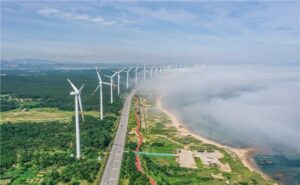
Since 2012 the city has implemented 53 marine ecological restoration projects. More than 2.2 billion yuan of subsidies were received from higher authorities, and more than 4 billion yuan of investment was made.
More than 120 km of damaged coastline and 1,200 hectares of coastal wetlands have been rehabilitated.
The virtuous cycle of blue carbon – ecology and blue carbon economy is emerging.
Weihai has seized the international high point of blue carbon development as is playing a leading role in ocean carbon sink innovation and strengthen the blue economy to promote urban development and transformation.
Today, the blue carbon economy has become an important engine for Weihai to build an innovative international ocean strong city and the “green code” for high-quality development.
The Weihai Municipal Ocean Office and the Municipal Ocean Development Bureau have played a leading coordinating role. In the past five years Weihai’s marine GDP has increased by an average of 8.5% per year accounting for 36.6% of GDP.
In 2023, the city’s marine GDP will exceed 130 billion yuan (USD$20 billion).

Weihai’s Rongcheng District
Green Economy Innovation with Chinese Characteristics.
In order to maintain its leading edge in the fierce competition among marine cities, Weihai has introduced a number of reforms and innovations…
In its 2024 Work Report it outlined “16 Measures for to grasp the Marine Economy”.
It released an integrated policy package for promoting “High-Quality Development of the Marine Economy” and held special training courses on innovation and breakthrough development of the city’s marine industry.
At the same time Weihai established a monthly reporting system for monitoring the performance of the marine economy targeting a 7% increase in City GDP.
Transformation to a green, efficient and modern fishery system.
Weihai’s seafood output has ranked first in the country for more than 30 years., leading the country in the construction of “Smart Farming”.

Weihai “Ocean Ranching”
Seeds (germoplasm) is the “microchip” of modern fishery.
To promote the revitalisation of aquatic seed industry two national level lab bases were established.
Xunshan Algae and Shellfish Seed Industry R&D Base and the Sanggou Bay Ecological Model Demonstration Base were settled in Weihai to accelerate the transformation of scientific achievements into commercial outcomes and promote the deep integration of industrial chain and innovation chain.

Upstream

Downstream
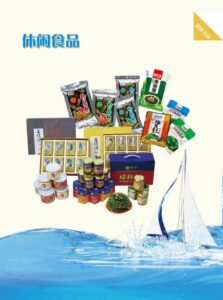
Consumer Products
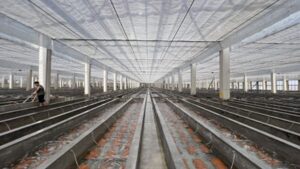
Industry Scale Supply-side
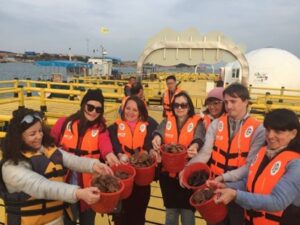
Weihai Seafood Tourism
Weihai leads the Country in sea cucumber breeding with Ocean University, and is carrying out new species breeding with the Yellow Sea Fisheries Research Institute.
Weihai is actively promoting the introduction and breeding of deep-sea fish such as black cod nurturing university-industry cooperation to accelerate the transformation of scientific achievements to commercial outcomes – Blue Economy.
Weihai is promoting itself as China’s “Marine Seed Industry Capital“.
Innovation in Marine Production
Weihai has started construction on 330+ deep-water cages, and has had 3 National-level marine ranch artificial reef projects approved for construction. Weihai has focused on the revitalisation of its aquatic industry to enhance new momentum of modern marine fishery development through key breakthroughs expanding the use of local products throughout the entire industry chain.
Australia?
In the processing sector Weihai has increased the added value of aquatic product processing, driving high-quality development across the processing industry chain.
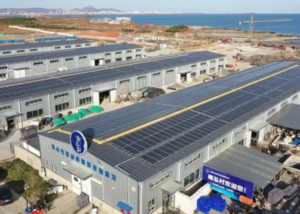
Weihai Rongcheng Seafood Processing Area
The World is your Oyster
Oysters are a star aquatic product that Weihai has focused on building in recent years and have focused on building an oyster processing park investing 550 million yuan to build three oyster industry integration development demonstration zones encouraging more than 170 dispersed oyster farmers and processing companies to move in.

Weihai Oysters
This has included the development of an automated oyster processing production line (12 processes), realising the full mechanisation of the oyster production chain for the first time.
In order to promote the transformation and upgrading of oysters from a basic primary production, Weihai has cultivated more than 10 oyster deep processing companies, such as Huaxin Food, with an annual output of more than 20,000 tons of oyster meat, canned oysters and other products exported to 15 countries/ regions.
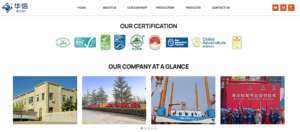
Huaxin Food Group
In addition to traditional strengths in varieties such as kelp, sea cucumber and squid, Weihai has applied the advantages in high-quality processing value-add to manage against market sensitivity and actively compete in the domestic market.
Marine biology and healthy food industry clusters
Australia has an enviable, strong two-way trade relationship with China, however this relationship requires re-investment and collaboration in order to maintain our relevance (and competitiveness) in a global food ecosystem.
Australian government needs to work with industry, producers and research institutes in direct and associated sectors to collaborate on Green, Blue economic opportunities.
Getting into market and engaging in knowledge-gathering Study Tours is an important first step.
GREEN GOLD VENTURE: Join us for the next in-market tour or contact us to curate a tour for your industry sector.

